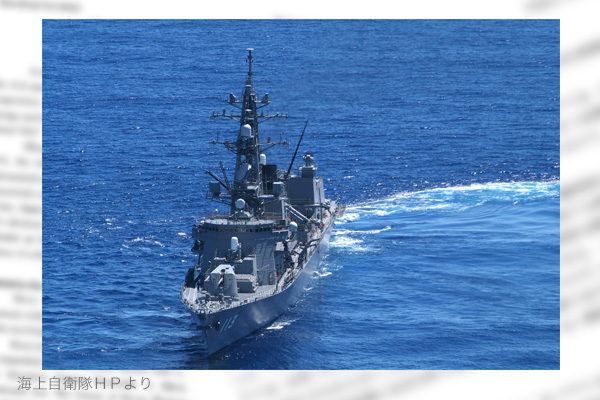The Japan Maritime Self-Defense Force’s destroyer Sazanami passed through the Taiwan Strait on September 25. It coordinated the passage with a Royal Australian Navy destroyer and a New Zealand Navy supply ship. As a Chinese military survey ship passed through Japan’s territorial waters in the Tokara Strait of Kagoshima Prefecture on August 31, some media reported that Japan took an unprecedented measure to counter the Chinese action. As expected, a spokesperson for China’s Ministry of National Defense strongly reacted, saying, “We firmly oppose provocations that undermine China’s sovereignty and security.”
The fact that Japan has taken such action in a manner to move away from its past hesitant response of only lodging a protest against Chinese intrusion into Japan’s territorial waters can be regarded as representing a step forward.
Natural exercise of rights
Not only the U.S. but Canadian, German, and other Western naval ships have passed through the Taiwan Strait. The Chinese have reacted against such passages while falling short of taking any harsh countermeasures. And no wonder. The Taiwan Strait between mainland China and Taiwan is about 130 kilometers wide at its narrowest point. Excluding China’s and Taiwan’s territorial waters totaling 24 nautical miles or 43 kilometers, an 87-kilometer-wide space is left for free passages by ships of any nationality. This means that China has no reason to react to foreign warships’ passages through the Taiwan Strait.
Given that the Taiwan Strait is wider than a distance of about 111 kilometers between Taiwan and the westernmost Japanese island of Yonaguni, it is difficult to find a reason why Japanese warships had refrained from passing through the strait.
Even though the JMSDF ship’s passage through the Taiwan Strait looked remarkable because of Japan’s earlier, extremely reserved attitude, it was only the natural exercise of the passage right at last.
Did the prime minister consider an unforeseen situation?
According to media reports, the passage of the JMSDF destroyer through the Taiwan Strait came at the instruction of outgoing Prime Minister Fumio Kishida. If so, did Kishida consider before the instruction the possibility of an unforeseen situation to be caused by the Chinese People’s Liberation Army?
If it is the US Navy, frontline warships are usually given the authority to respond to any unforeseen situation from normal times. If an unforeseen situation occurs, a frontline commander can immediately make a decision to strike back against any attacks in a manner to exercise the right of self-defense.
However, JMSDF ships are supposed to act in accordance with the rules of engagement for warning and surveillance missions applied during normal times. It will be difficult for them to immediately strike back by the frontline judgement due to the narrow scope of discretionary power.
Japan Self-Defense Forces Joint Chief of Staff Gen. Yoshihide Yoshida, the highest-ranking JSDF officer, emphasized at a press conference on September 26 that “it is important not to escalate the situation further.” The statement apparently implied not only his intention to have China understand the JMSDF action but also his concern that it would be difficult to respond to any further worsening of the situation.
I hope that Prime Minister Kishida had given his instruction in anticipation of the worst that can be imagined and that his successor Shigeru Ishiba will authorize frontline commanders to strike back against any attacks at their discretion.
Seiji Kurosawa is a Planning Committee member and senior research fellow of the Japan Institute for National Fundamentals and a retired captain of the Japan Maritime Self-Defense Force.


